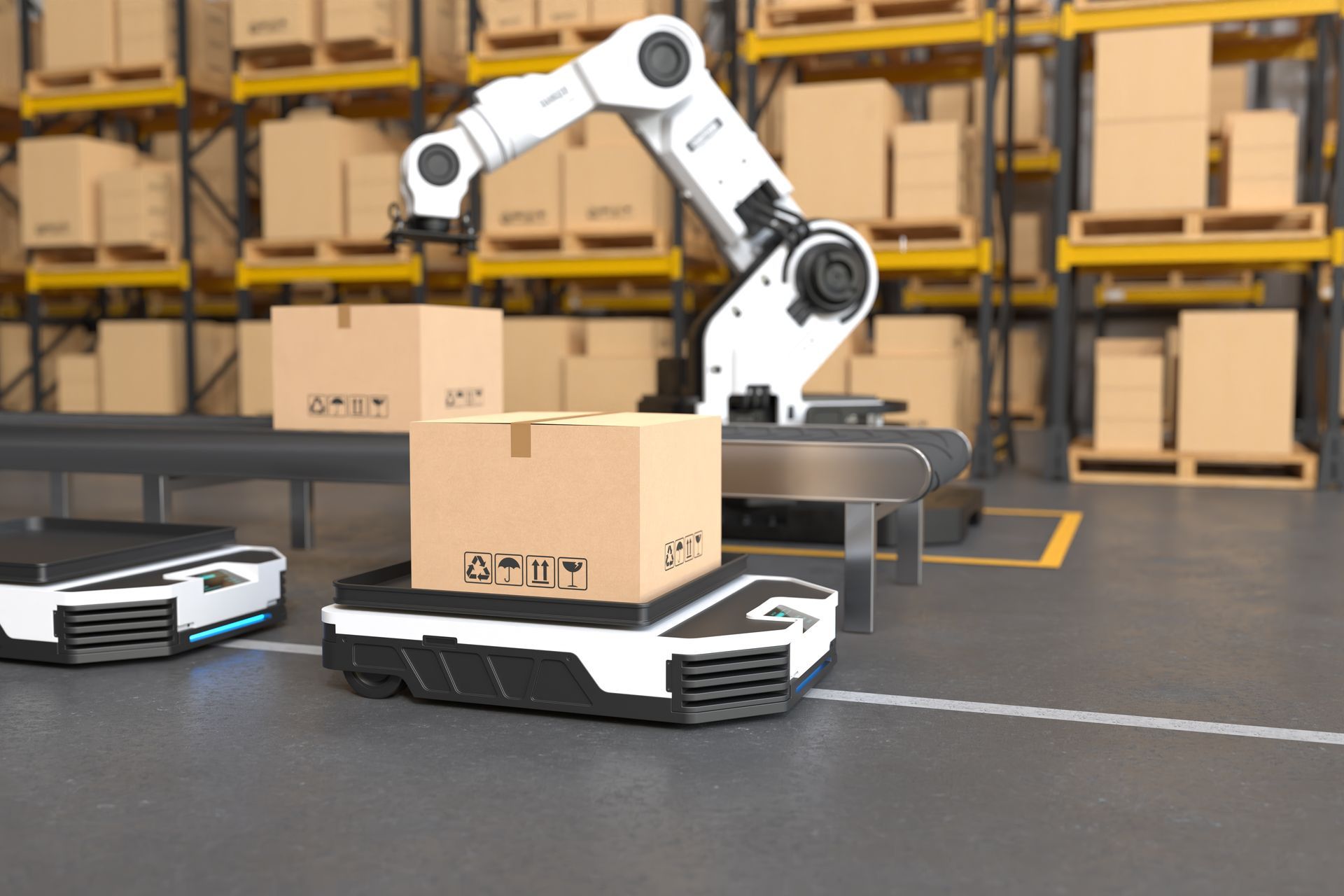How Industrial IoT Networking Work, And How You Can Get Started? - Dataconomy

Networking in the Industrial Internet of Things (IoT) is revolutionizing the way different sectors function through the establishment of interconnected arrangements that enhance effectiveness, dependability, and flexibility. This marks a significant change in the industrial realm, signaling the arrival of a fresh phase where operational excellence revolves around technology and pioneering ideas.

The term Industrial IoT (IIoT) pertains to the linkage of industrial machinery and devices via the Internet, permitting the gathering, examination, and prompt utilization of data. This advanced network offers an exceptional level of connection, connecting physical equipment with intelligent software systems. This amalgamation of sensors, communication networks, data analytics platforms, and automation tools brings about a seamless environment that facilitates smarter decision-making and immediate responsiveness.
In this rapidly evolving era of digital transformation, it is crucial for organizations to grasp the significance of Industrial Internet of Things (IIoT) in order to stay ahead of the competition. Implementing IIoT goes beyond a simple technological enhancement. It is a strategic maneuver that brings business operations in line with current demands. By effectively utilizing immense quantities of data and employing advanced analytics for analysis and interpretation, organizations open up new doors for innovation and excel in ways that were previously unimaginable.
The immediate nature of IIoT allows industries to now observe and react to altering circumstances without delay. Whether it is a sudden shift in equipment functionality, a surprising variation in demand, or a developing opportunity in the market, IIoT enables organizations to take prompt and accurate actions. This flexibility results in stronger operations that can withstand uncertainties and seize opportunities.
The Industrial Internet of Things (IIoT) functions through the connection of industrial machinery and devices using sensors and specialized software which gather valuable information. This information is subsequently transmitted to central systems for examination, allowing for the extraction of valuable insights that can guide intelligent decision-making.
Collecting data is the essential first step in setting up industrial IoT networking. Sensors and devices are strategically placed in different types of industrial equipment, from large machines to fragile instruments. These devices can collect a wide range of information, such as changes in temperature, levels of humidity, patterns of vibration, measurements of pressure, and many other details. The level of detail and accuracy of this data depends on the type of sensors used and the specific needs of the industry. The goal is to gather immediate and useful information that can offer an understanding of how the equipment is operating and its current state.
After gathering the data, the subsequent step is to send this information to a central system where it can be analyzed and processed. This stage involves a intricate procedure of combining and moving the data, frequently requiring the transformation of raw data into a suitable format for transmission. Different methods of communication can be utilized, such as wired connections like Ethernet or wireless technologies like Wi-Fi and cellular networks. The selection of the network relies on factors such as the amount of data, speed requirements for transmission, and the particular industrial setting.

Once the data has been received, the next important stage is to process and analyze it. This step usually starts with data cleansing, where any unwanted or unrelated information is removed. After that, the data might be transformed and loaded into an analytics system where sophisticated algorithms, possibly utilizing artificial intelligence and machine learning, are utilized. The objective here is to examine the data, detect patterns, and extract valuable insights that accurately represent the status and efficiency of the industrial machinery.
The importance of incorporating IoT advancements and analyzing data strategically
The last step in Industrial IoT networking is to transform the understandings obtained from data analysis into tangible actions within the industrial system. Depending on the results, automated actions might be activated, such as modifying equipment settings to improve performance or notifying human operators for assistance. Occasionally, the system may even initiate precautionary actions if potential problems or inefficiencies are identified. This stage connects the difference between data and decision-making, allowing for a forward-thinking and adaptable industrial setting that uses technology to boost productivity, safety, and sustainability.
The essential elements of industrial IoT networking are as follows:
The intricacy and usefulness of Industrial Internet of Things (IIoT) networking make it a potent instrument for contemporary industrial purposes. By comprehending its diverse constituents and uses, sectors can employ IIoT to stimulate ingenuity, effectiveness, and expansion. With unceasing progressions in technology, the prospective uses and advantages of IIoT persistently broaden, rendering it an essential facet of the industrial realm.
Many Uses For Industrial IoT Networks
The possibilities of IIoT are as diverse as they are influential, impacting almost every part of industrial operation. From anticipating maintenance needs and maximizing resource usage to ensuring high quality, managing supply chains, and overseeing compliance, IIoT offers a range of resources that enable businesses to function with greater efficiency, accountability, and competitiveness.
A remarkable utilization of industrial IoT networking is found in the field of predictive maintenance. By continuously observing and examining machinery, IIoT systems have the capacity to detect signs of deterioration, abnormal actions, or any other cues that suggest a machine could encounter failure in the near future. This skill to anticipate failures in advance enables organizations to plan maintenance in a proactive manner rather than a reactive one. By tackling problems at an early stage, businesses can prevent unforeseen periods of inactivity and the subsequent expenses, resulting in smoother operations and notable cost savings.

The manufacturing industry frequently needs to use different things like power, water, and materials. Connecting industrial devices to the internet plays an important part in keeping an eye on and improving the use of these things. By always monitoring how much is being used, measuring effectiveness, and giving information about possible waste, the internet of things in industry helps companies make smart choices about how they use resources. This can result in using resources in a more sustainable way, spending less money on operations, and having a business that is better for the environment overall.
The utmost importance lies in ensuring high standards of production, and the use of industrial IoT networking plays a vital role in achieving and improving these standards. By continuously monitoring production processes, industrial IoT networking can identify any deviations from the predetermined quality parameters, enabling prompt corrective actions. This continuous supervision guarantees that the established quality standards are consistently upheld throughout the entire production cycle. As a result, the final product attains a superior level of quality, leading to heightened customer satisfaction and a reinforced brand image.
Controlling a complicated supply chain may present difficulties, but the utilization of industrial IoT networking presents a remedy by allowing for live monitoring of materials and products. By consistently being informed about the whereabouts and condition of goods, businesses can make more precise predictions about delivery times, optimize the amount of inventory, and make informed choices based on data to improve the overall effectiveness of the supply chain. This degree of control results in a supply chain that is more adaptable and responsive, ensuring better synchronization with customer needs, and ultimately providing a competitive edge in the market.
Adhering to environmental rules and safeguarding the well-being of employees are crucial elements of industrial activities. The utilization of industrial Internet of Things (IoT) networking technology can help supervise various environmental elements, including emissions, waste management, and energy usage. This technology offers precise information to guarantee adherence to regulatory benchmarks.
Moreover, industrial IoT networks have the capability to monitor safety indicators in a workplace, such as the quality of air or the presence of dangerous situations, enabling prompt actions to safeguard the welfare of employees. By unifying environmental monitoring and safety measures, companies can promote a mindset of accountability and responsibility, ensuring that their operations comply with both legal obligations and societal standards.

How To Create One?
To successfully implement IIoT, it is crucial to comprehend the unique requirements and goals of an organization. This entails a comprehensive evaluation of the existing systems, pinpointing areas where IIoT can provide benefits, and establishing precise objectives.
No matter if you want to enhance productivity, decrease periods of inactivity, enhance standards, or meet industry regulations, outlining a clear objective ensures that the project is in sync with the overall business plan. This also guarantees that all future endeavors are focused on accomplishing that objective.
Choose The Best Tech
Selecting the suitable technology is a vital choice that can either lead to success or failure in the implementation of industrial IoT networking. This entails picking the right sensors to gather pertinent data, determining the communication network that best fits the industrial setting (be it wired or wireless), and opting for data processing and analysis tools that can offer valuable insights.
It is crucial to have a complete comprehension of the needs and a thorough assessment of the accessible technologies in order to make appropriate decisions that will uphold the intended goals.
Creating The Perfect Network Design
Designing a strong network framework is a challenging endeavor that demands meticulous preparation. This entails arranging the network structure, guaranteeing flawless device connectivity, and establishing efficient, adaptable, and safe data pathways.
When thinking about building a network, it's important to think about how the physical locations will be set up, how the new system will work with current ones, how to keep everything secure, and the potential for future growth. By creating a well-thought-out network architecture, you can guarantee that data will flow efficiently and the system can easily be expanded as needed.
The execution stage for industrial IoT networking is where the strategy becomes a reality. This includes putting in place detectors, establishing communication networks, arranging data processing technologies, and bringing everything together into a unified system. Conducting preliminary tests on a smaller level or via a trial initiative enables the identification of any possible problems or deficiencies in the blueprint.
Thorough examination makes certain that the system operates as planned and that any issues are dealt with prior to implementing it completely.
Once the operational industrial IoT communication system is active, it is vital to consistently supervise and optimize it. Regularly evaluating how the system is performing assists in pinpointing areas that may be enhanced, such as increasing productivity, minimizing delays, or refining the precision of data.
Consistent updates, modifications, and refining maintain the system in line with the changing requirements of the company and guarantee its continuous provision of benefits.
In today's fast-paced and highly competitive global economy, the significance of industrial IoT networking as a valuable resource cannot be emphasized enough. It is no longer just a choice to consider, but a crucial investment that every industry must make in order to succeed in the contemporary era.
By harnessing the power of industrial IoT connectivity, companies can achieve higher levels of productivity, flexibility, and creativity, positioning themselves as pioneers in the ever-changing industrial landscape. The combination of machinery, data, knowledge, and human skills prepares us for a future where industries flourish, pushing boundaries and embracing the infinite opportunities of a connected globe.
Image source: onlyyouqj/Freepik.

















































